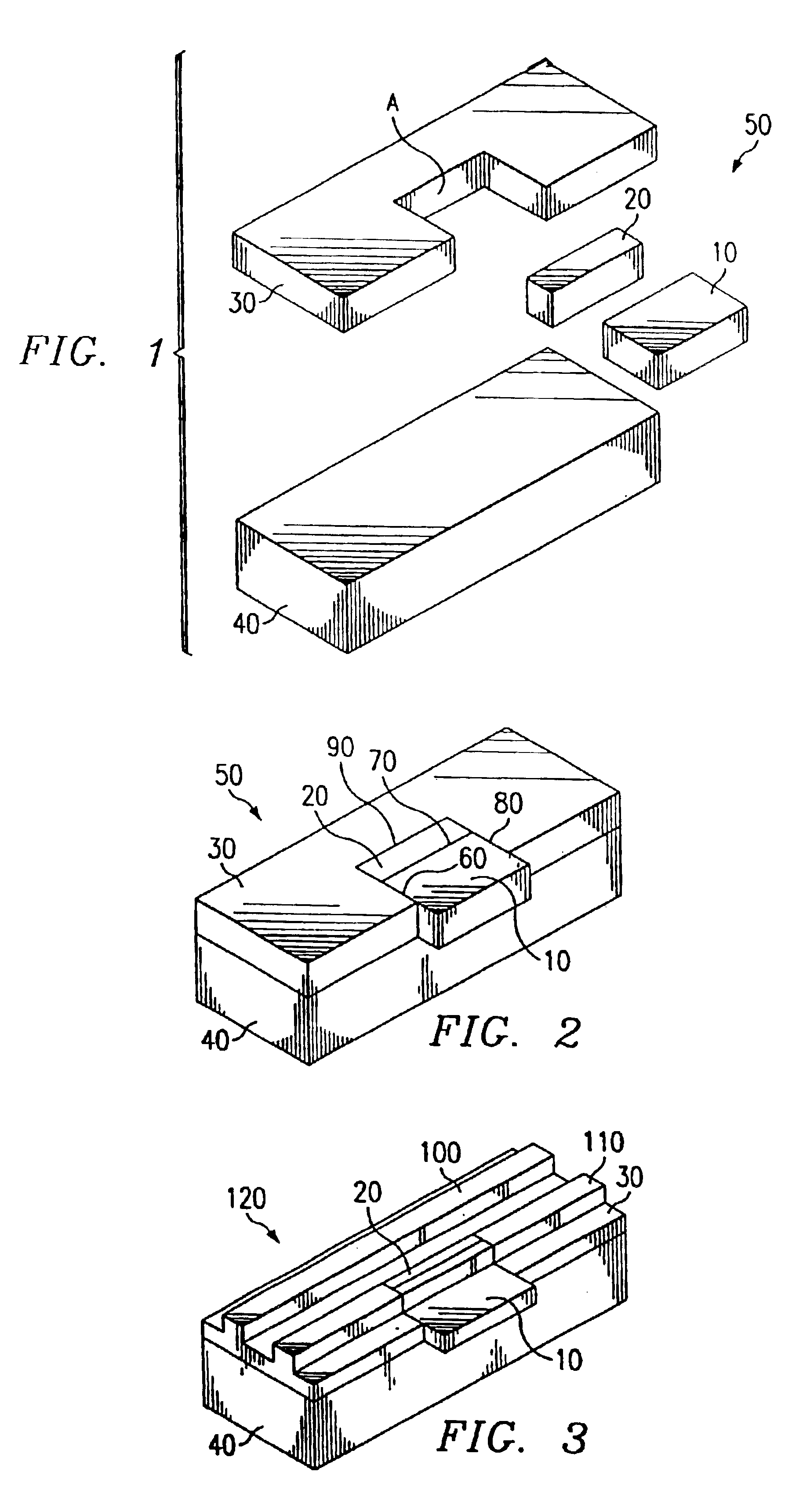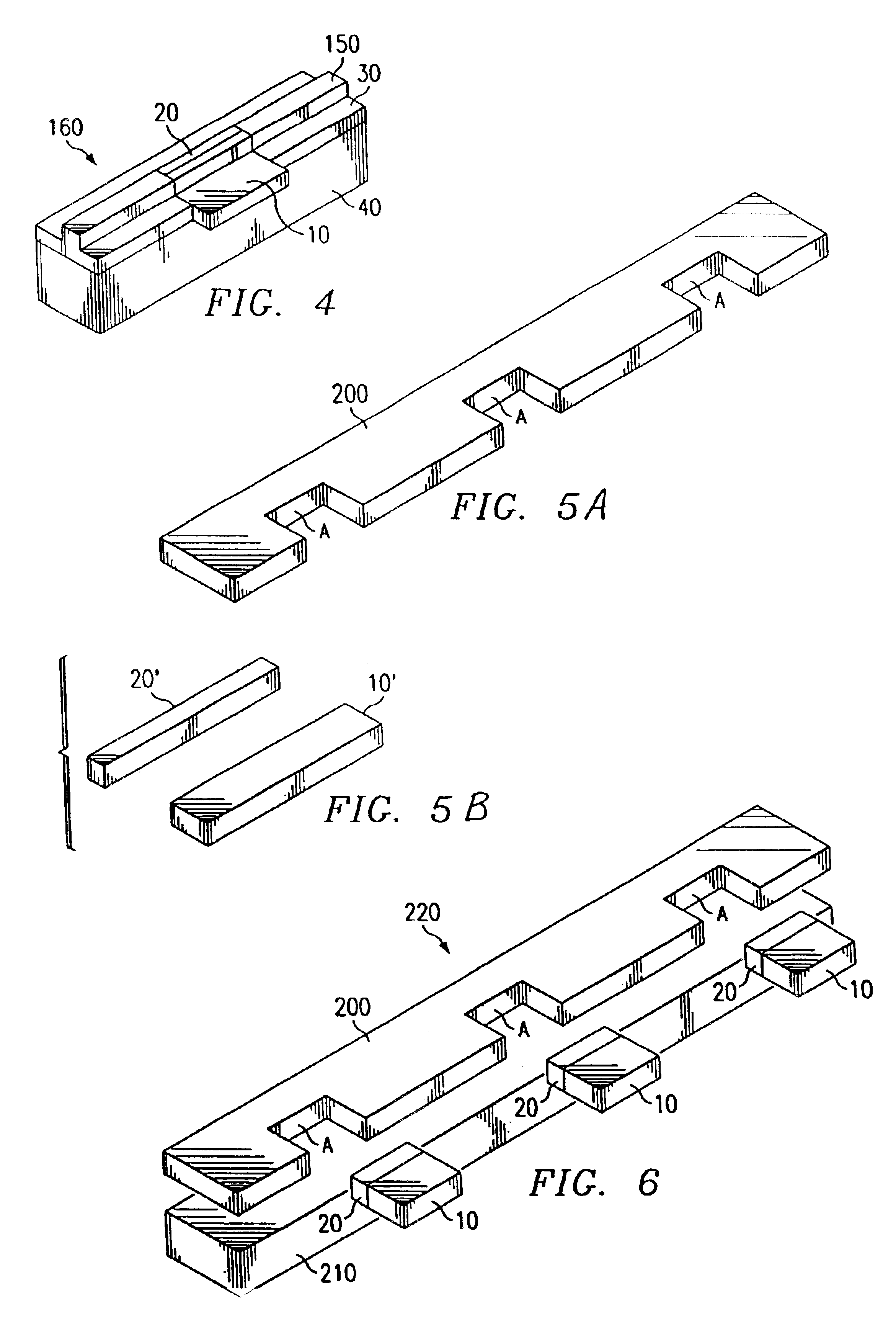Thin film magnetic tape head and method of manufacturing therefor
a technology of magnetic tape and head, which is applied in the field of thin film magnetic tape head, can solve the problems of increasing the complexity of assembly process, increasing the effective separation distance between the tape and the head, and reducing the stability of the combination structure, so as to improve the structural stability and improve the structural stability
- Summary
- Abstract
- Description
- Claims
- Application Information
AI Technical Summary
Benefits of technology
Problems solved by technology
Method used
Image
Examples
first embodiment
FIG. 3 shows a final magnetic head assembly 120 in accordance with the present invention. This final assembly 120 includes tape bearing surfaces 100 and 110, which are narrow ridges formed by machining or etching adjacent portions of a top portion of the slider 50. Once formed, it is preferable to profile and highly-polish the tape bearing surfaces 100 and 110 to allow for a smooth, low friction contact for a magnetic tape to pass over.
As mentioned above, the I-block 20 serves to simplify the manufacturing of the magnetic recording head of the present invention. It is preferable to have a controlled bond lines surrounding the cluster 10. However, it is difficult to achieve a desired level of precision on the surface A (shown in FIG. 1) of the U-bar 30 in order to adequately achieve the controlled bond line at the device surface of the cluster 10. However, by interposing the I-block 20 between the cluster 10 and the surface A, the I-block 20 can compliment a geometrical mismatch betw...
second embodiment
While this method is illustrated in FIGS. 5-9 by way of an example in which three magnetic heads are assembled at once, one skilled in the art would appreciate that this method is not restricted to three, but may be adapted to manufacture any number of magnetic heads at once. In addition, this method may be easily adapted to assemble heads in accordance with the second embodiment, wherein only a single tape bearing surface is formed. Finally, the descriptions above are not intended to restrict in any way the order in which the frame bar 200, each I-block 20, each cluster 10, and the base bar 210 must be assembled.
The above-described method may also be modified such that portions of the slider bar 220 are cut off before forming tape bearing surfaces thereon. Such a modification may be desirable, for example, if magnetic heads having differing numbers of tape bearing surfaces are desired.
PUM
| Property | Measurement | Unit |
|---|---|---|
| speed | aaaaa | aaaaa |
| pressure | aaaaa | aaaaa |
| stability | aaaaa | aaaaa |
Abstract
Description
Claims
Application Information
 Login to View More
Login to View More - R&D
- Intellectual Property
- Life Sciences
- Materials
- Tech Scout
- Unparalleled Data Quality
- Higher Quality Content
- 60% Fewer Hallucinations
Browse by: Latest US Patents, China's latest patents, Technical Efficacy Thesaurus, Application Domain, Technology Topic, Popular Technical Reports.
© 2025 PatSnap. All rights reserved.Legal|Privacy policy|Modern Slavery Act Transparency Statement|Sitemap|About US| Contact US: help@patsnap.com



